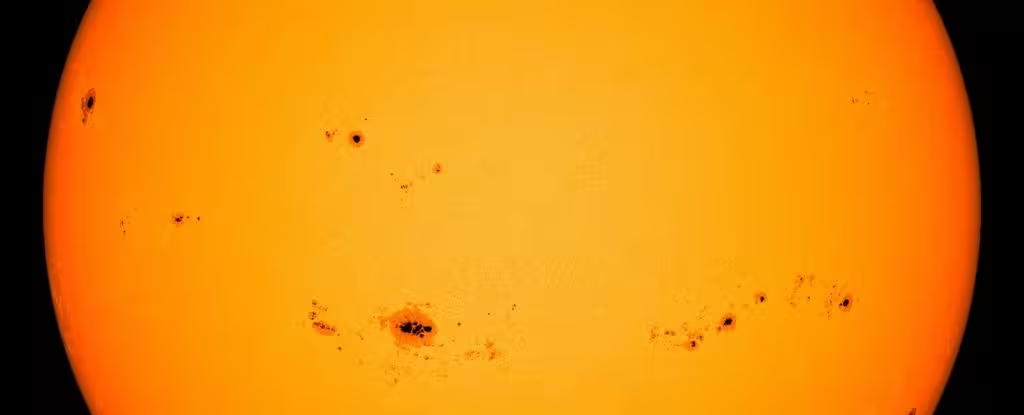This year’s Northern Lights were spotted much further south than usual, and social media was flooded with stunning images of colorful skies. Now imagine an aurora so intense that it instantly renders smartphones unusable, just as particles from the sun flood electronic devices. Such extreme solar storms are incredibly rare; Only six have left their mark on Earth in the last 14,500 years, and none since the heyday of the Assyrian Empire about 2,700 years ago.
Cosmic event in 664 BC
A research team led by Iryna Panyushkina of the University of Arizona Tree Ring Laboratory and Timothy Juhl of the Department of Earth Sciences has determined the last time Earth experienced such a powerful burst of cosmic radiation. Their findings were published in the journal Contact Earth and EnvironmentIt shows a carbon-14 explosion dated to 664 BC, pinpointing the time of this elusive extreme solar storm.
What are solar storms?
Solar storms occur when the Sun releases enormous amounts of energy in the form of solar flares or coronal mass ejections (CMEs). These events fling high-energy particles and magnetic fields toward Earth at incredible speeds. When these charged particles interact with the Earth’s magnetic field, they can create dramatic and far-reaching effects.
Tracking solar storms through carbon-14
“Within a few months, carbon-14 will move from the stratosphere to the lower atmosphere, where it will be absorbed by the trees and become part of the wood as it grows,” Panyushkina said.
The team discovered this ancient solar storm by analyzing tree rings for carbon-14, a naturally occurring radioactive form of carbon. Determining the precise timing of such powerful solar flares provides important data for scientists who develop and study models of the Sun’s activity over time.
Signature of extreme solar storms
It wasn’t until 2012 that scientists noticed extreme solar storms known as Miyake events. That year, Fusa Miyake, a Japanese physicist and collaborator on Panyushkina’s team, published a paper reporting a hallmark of storms: increases in radioactive carbon isotopes in tree rings.
Miyake events occur when the Sun’s electromagnetic field weakens, allowing plasma on the Sun’s surface to escape into space. Increased solar activity causes protons to bombard the Earth’s atmosphere, triggering chemical reactions that cause radioactive isotopes to flare up.
“Thanks to radiocarbon from tree rings, we now know that six Miyake events have occurred in the last 14,500 years,” Panyushkina said. he said. “If it happened today, it would have catastrophic consequences for communications technology.”
Methodology: tree rings and ice cores
The research team used surgical blades to cut individual tree rings from ancient wood samples, including dead trees buried along river banks and wood excavated during archaeological excavations. The researchers then burned cellulose, the main component of wood, to determine its radiocarbon content.
To confirm whether solar storms cause radiocarbon bursts, the researchers compared tree ring data to spikes found in beryllium-10, another isotope locked in ice cores from glaciers and ice sheets. Like carbon-14, beryllium-10 is formed by solar particles in the atmosphere and becomes trapped in rain and snow and ice.
“If ice cores at both the North and South Poles show an increase in the beryllium-10 isotope during a given year, which corresponds to an increase in radiocarbon in tree rings, we know there is a solar storm,” Panyushkina said.
Can we predict extreme solar storms?
Although tree rings act as “archivists” recording Miyake’s events, researchers have yet to find evidence of order in these events. According to Panyushkina, tree rings give us an idea of the scale of these powerful storms, but we cannot detect any patterns, so we are unlikely to be able to predict when such an event will occur.
“Nevertheless, we believe our paper will change the way we look for and understand carbon-14 spike signals from extreme solar proton events in tree rings,” Panyushkina said.
“The energy from such events changes not only the radiocarbon content of the atmosphere, but also the chemical composition of the atmosphere. We are trying to find out how these short-term and powerful events affect the Earth system as a whole.”
Source: Port Altele
